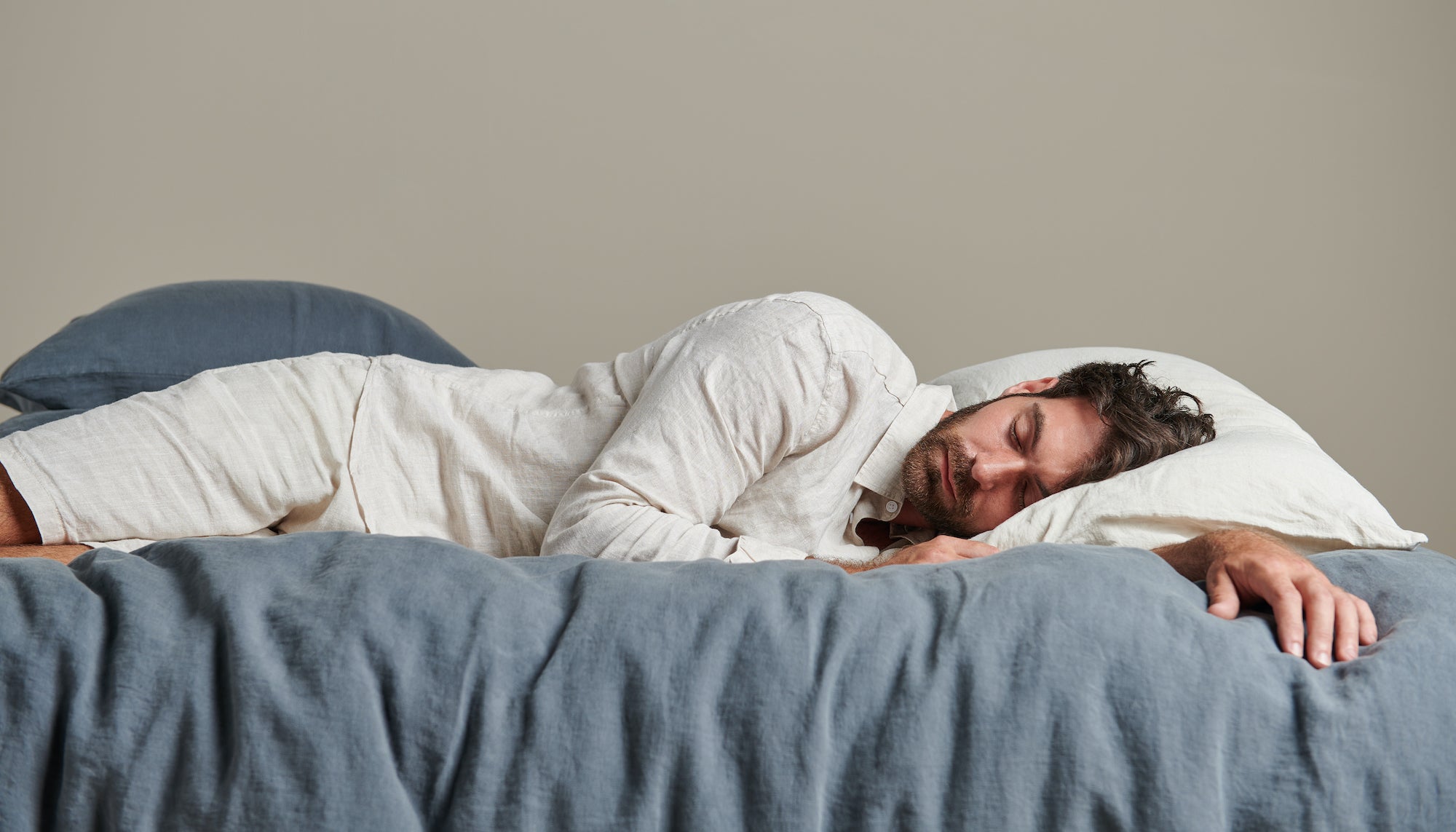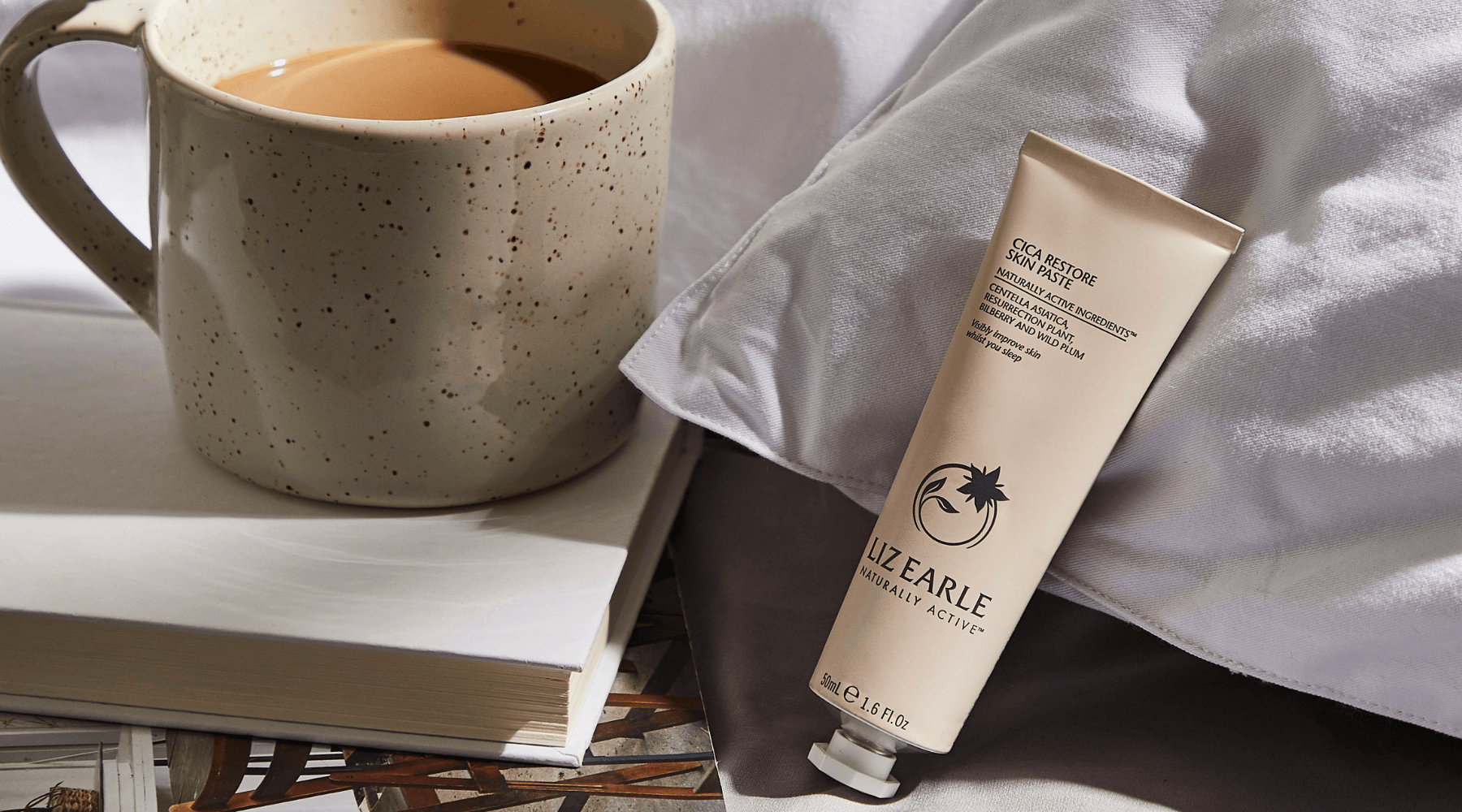
How Imaginative Practices Are Key To A Great Night’s Sleep
Words: Clare Macdonald from Creative Sleep - founder of the ‘Help For Sleep’ programme and previous insomniac
I used to believe the solutions to better sleep simply lay in avoiding caffeine, blue light and stress. What I didn't know (yet) was that drifting off to sleep was to be more about my imagination and ‘self talk’. Once I had learnt this, I would rarely be troubled by sleep problems again.
No doubt about it, insomnia is a huge problem in the UK. Research from 2017 concluded that two-thirds (67%) of UK adults suffer from disrupted sleep and nearly a quarter (23%) manage no more than five hours a night - and this was pre-pandemic. Since then, insomnia numbers are believed to have doubled.
Clare snuggled up in Linen in Snow
Sleep anxiety: where we’re going wrong
Whether it’s trouble drifting off or waking in the early hours and not being able to get back to sleep, it’s clear that we need help.
Standard suggestions of what can help, or hinder, our ability to drop off (often termed ‘Sleep Hygiene’), can have a knack of making us feel even more anxious about sleep. This is a common theme I noticed in my own time as an insomniac.
The dos and don'ts can lead to anxiety over ‘doing it wrong’.
‘Oh no, I’ve had a coffee at 1pm and my cut off is 12pm. I won't sleep tonight’.
‘Oh no, I've checked my work emails. I won't sleep tonight’.
‘Oh no, I've had a nap but it wasn't 8 hours after waking and 4 hours before my estimated bedtime. I’ll never sleep tonight’.
Sound familiar?
As a nation we buy supplements, lavender pillow sprays, we sign up for meditation apps. We avoid anything gloomy on TV and put a curfew on caffeine and our devices.
We’ve read it all; the dangers of blue light, the best room temperature for sleep and the optimum time for a nap. Yet the uncomfortable fact remains; sleep issues have rocketed and the current advice doesn't seem to be helping.
If avoiding caffeine and blue light before aren't the answer to insomnia, what's the solution?
Tibetan Dream Yogas
I used to absolutely dread the night so it was a surprise and delight to find the answer was inside my own head.
You see, the tales I would tell myself throughout the day (such as the ones above about my caffeine cut off) would have me essentially performing mean hypnosis on myself. A kind of nocebo. By telling myself I wouldn't sleep, my very literal brain would follow that command. It’s mind bogglingly simple.
We watch the clock, calculating the hours we’ve had vs the hours left until our alarm. We attribute a relevance to those numbers, making them mean success or failure and imagining the very worst outcomes for the day ahead.
And it’s here, in the most trying moments that the answer lies. It’s your imagination that will hand you the keys to a blissful night’s sleep.
This is the principle behind Tibetan Dream Yogas, my absolute favourite practice where our imagination has the freedom to explore, to revisit and rewrite alongside a steady rhythmic breath that takes us ‘there’ - a dreamlike space.
Breathwork
The foundation to any imaginative practices is always the breath. Using our trusty ‘Coherent’ breathing (in for 6 and out for 6 exclusively via the nose) takes us to the sweet spot of 7.83hz on the border of Alpha and Theta brainwaves.
This breathing technique optimises the amount of oxygen the brain receives making it feel safe. When stressed or anxious we tend to shallow breathe or even hold our breath and the ensuing lack of oxygen drives the brain crazy.. With a steady supply, the brain is more inclined to put its feet up and switch to autopilot rather than prepare for battle.
Watch our IGTV on breathwork tips here
Fantasise
So that’s the breath, what about the thoughts and pictures? If you’re a night waker and inclined to slide down the 3am spiral of doom, a great trick is to interrupt it by picturing the next day going like a dream and enjoy the fantasy.
The hours between 3am and 5am are the most peaceful and viewed as an auspicious time in Buddhism - the best for meditation and positive thought.
From a neuroscientific perspective this coincides with the time of day when our minds are most plastic or open to repatterning, making it even more important to speak kindly to ourselves, imagining a great outcome instead of the worst.
Stop watching the clock
Another game changing technique plays on our skill for tormenting ourselves about the time. Does this sound familiar?
You look at the clock and it says 02:33 the colon separating the 2 and the 3 flashing furiously, reminding you of the seconds passing by… Closer to a terrible day, sore eyes, no energy and the meeting that will now be a disaster... STOP!
What a great imagination! Now try to use this gift for projecting into your future to work in your favour:
Remind yourself...
- How you always eventually fall asleep.
- How incredulous you’ll be on waking, as to why you spent hours agonising about him/her/that/then. How insignificant it will seem in the daylight.
- How you were fine in that other meeting with even with less sleep
- How when the alarm goes off suddenly, this bed feels the most comfortable place in the world. How you’ll wish for 4 more hours to stay here and sleep. And here you are now with 4 more whole hours of delicious, cosy comfort.
Remember your best sleep memory
If the struggle is getting to sleep in the first place, imagining a scene which makes you feel so unbelievably cosy. Along with the breathwork, this is an extremely powerful way to calm the mind to sleep.
I recently asked the question to friends, clients and colleagues ‘What is your best sleep memory?’.
Here were the most common themes:
- Being looked after (back at the family home or a hotel). There was something about having no responsibilities that allows us to let go and drift off.
- The memory of resting your bones after a long satisfying day, often in nature with lots of fresh air and finally being able to drop into a well earned sleep.
- By far the most popular memory was of the perfect bed, often in a hotel, a dreamy mattress, plump pillows and freshly washed, white bedding. It had to be white.
Use your imagination
For those who couldn’t recollect a ‘best sleep ever’ they imagined a fantasy sleep instead. This works just as well as a memory and I regularly used an imaginary scene during the sleepless years.
I would imagine myself in our prehistoric past, curled up in a cave, with a crackling fire, lots of furry covers and elders keeping watch. Something about this vignette ticked off lots of primal needs; to feel warm, dry, fed and protected, it was just the remedy at a time when in retrospect I felt vulnerable to attack at work.
This works
Using thoughts and pictures (the imagination) to coax what we want rather than what we’re trying to avoid can have an enormous impact, it turned my life around. I no longer goad myself into sleeplessness, instead of dread bedtime is now the best time.















